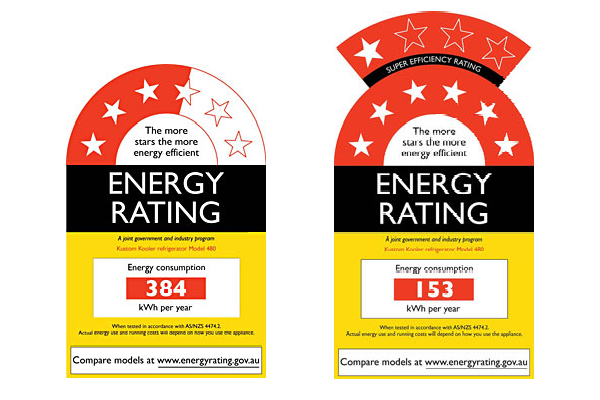
When you’re shopping for appliances, heating, cooling or lighting products, you’re not just buying for today — you’re investing in the long-term performance and efficiency of your home. That’s where energy labelling systems like MEPS and LCA labels come in.
Both help you compare products based on their energy use and environmental impact. But while they sound similar, they serve different purposes. Let’s explore what they mean and how to use them to make smarter choices.
What is MEPS?
MEPS stands for Minimum Energy Performance Standards. These are mandatory standards set by the Australian Government that establish the minimum level of energy efficiency appliances must meet before they can be sold in Australia.
MEPS apply to a wide range of products, including:
- Fridges and freezers
- Air conditioners and heaters
- Washing machines and dryers
- Dishwashers
- Televisions and monitors
- Lighting products
Any product covered by MEPS must meet these performance benchmarks before it can be legally sold. The aim is to eliminate the worst-performing products from the market, so consumers don’t end up with appliances that guzzle electricity and push up power bills.
Why MEPS matter
- They reduce household energy use
- They cut greenhouse gas emissions
- They save consumers money on running costs over time
- They help Australia meet its climate targets
You don’t need to memorise MEPS figures — the hard work is done for you. If it’s on the shelf, it’s already passed. But that’s just the baseline. For better performance, you’ll want to look at the Energy Rating Label.
The Energy Rating Label
You’ve probably seen this label on fridges, washing machines or air conditioners — a bright sticker with stars and a consumption figure. This label is based on MEPS testing but goes a step further by helping you compare products beyond the minimum standard.
It shows:
- Star rating (more stars = better efficiency)
- Annual energy consumption in kilowatt-hours (kWh)
This allows you to compare similar appliances at a glance. For example, if two washing machines have the same capacity but one uses 150kWh/year and the other 100kWh/year, the second one will cost less to run — and is likely rated higher.
When you’re planning energy-efficient heating and cooling, this star rating system can help you decide between systems like reverse cycle air conditioners or split systems.
What is an LCA label?
LCA stands for Life Cycle Assessment. While MEPS and Energy Rating Labels focus on energy use during a product’s working life, LCA looks at the entire lifespan — from raw material extraction to manufacturing, transport, use and eventual disposal.
An LCA label gives you a broader picture of a product’s total environmental impact. It’s like a carbon footprint for the whole product lifecycle.
These labels are not yet mandatory in Australia, but they are becoming more common, especially on premium or eco-focused products. Some companies voluntarily include them to show transparency and environmental responsibility.
MEPS vs LCA: what’s the difference?
| Feature | MEPS | LCA Label |
|---|---|---|
| Mandatory? | Yes (for regulated products) | No |
| Covers energy use? | Yes (during use) | Yes (full life cycle) |
| Environmental impact? | Partially | Yes, fully |
| Shows energy cost? | Via Energy Rating Label | No |
| Helps with product comparisons? | Yes | Yes, where available |
MEPS is about ensuring minimum standards for energy efficiency, while LCA is about broader sustainability. Think of MEPS as the entry requirement, and LCA as the eco deep-dive.
How to use these labels when buying
When you’re shopping for appliances or fittings, here’s how to use MEPS and LCA info:
- Check the Energy Rating Label
Choose the product with more stars and lower energy consumption (kWh/year). - Look beyond price tags
A cheaper appliance may cost more over time if it’s inefficient. Check the long-term running costs. - Ask about LCA info
If you’re buying sustainably, ask the supplier or check the brand’s website for LCA data. - Match the product to your home’s needs
For example, oversized air conditioners often waste more energy.
Where else does MEPS apply?
It’s not just about appliances. MEPS also applies to:
- Electric motors
- Distribution transformers
- Commercial refrigeration
- Lighting products like LEDs and CFLs
That’s why switching to LED lighting isn’t just about saving money — it’s also about meeting national energy efficiency targets.
The bottom line
MEPS and Energy Rating Labels are your first line of defence against inefficient appliances. They ensure you’re not buying outdated tech that wastes power. LCA labels take things further, giving you a full picture of a product’s environmental footprint.
If you’re building or renovating, these tools help you make decisions that are better for your wallet and the planet. Look for high star ratings, ask about lifecycle impact and always consider the long-term running costs alongside the purchase price.





